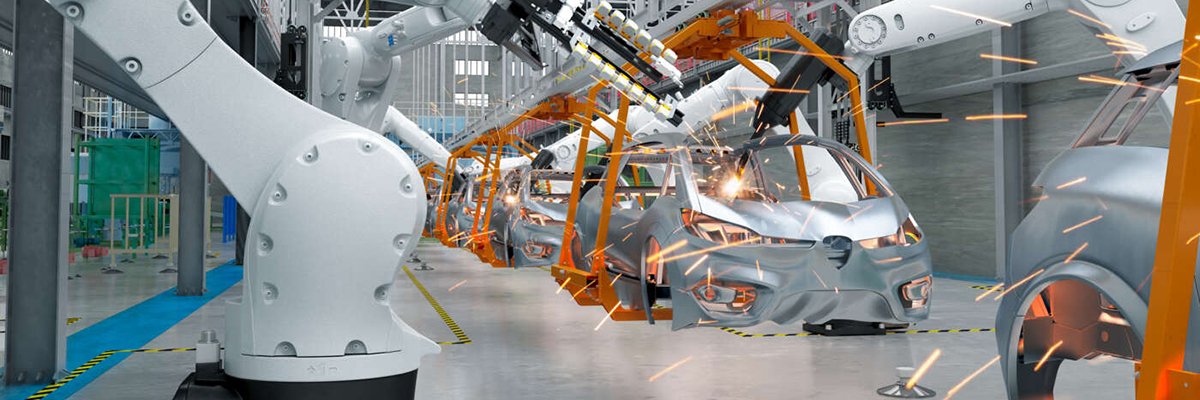Tech
Some 87% of enterprises see private wireless, edge ROI in a year | Computer Weekly

Artificial intelligence (AI) and private networks have helped elevate industrial networking, yet research from Nokia has found that AI’s potential in industrial settings hinges on access to high-quality, real-time data, while on-premise edge and private wireless are key to unlocking AI’s potential in complex industrial environments.
Nokia’s 2025 Industrial digitalisation report drew on insights from 115 industrial enterprises in manufacturing, energy, logistics, mining and transportation in Australia, Germany, Japan, the UK and the US.
Among the key findings of the study was that as many as 87% of on-premise edge and private network adopters are seeing a return on investment in just one year while enabling AI-driven use cases. In addition, 81% of industrial enterprises found setup costs lower, with over half saving at least 11%. Ongoing costs also dropped for 86% of companies, with 60% reporting savings of at least 11%.
Virtually all industrial enterprises were found to have deployed on-premise edge technology alongside private wireless. This combination said Nokia was enabling secure, low-latency connectivity in complex environments and pervasive sensor coverage, even in hard-to-reach areas, supporting AI-driven use cases such as predictive maintenance, real-time monitoring and digital twins in 70% of surveyed enterprises.
The study also highlighted how operational performance improvements driven by private wireless networks are supporting sustainability goals. Some 94% of the surveyed industrial enterprises reported a reduction in carbon emissions, with 41% achieving decreases of more than 20%, and 89% seeing energy savings. These gains were being amplified by predictive maintenance, connected devices and drones that cut fuel-intensive travel and enable more accurate, real-time emissions tracking.
Beyond environmental impact, 71% of surveyed companies were found to be actively deploying connected worker tools such as automated alarms, AI-assisted monitoring and geofencing solutions to reduce accidents and strengthen worker safety.
Nokia suggested that connected devices streamline tasks by reducing the need to move for signal and simplifying access to information. They also cut paperwork and minimise human error, boosting efficiency on-site, and automation.
Not surprisingly, security remained a top priority, with 57% of respondents identifying cyber security as a driver to deploy an industrial edge platform powered by a private wireless network. Nokia noted that its private wireless solutions offer built-in encryption, physical network separation and compatibility with zero-trust frameworks, making them ideal for mission-critical infrastructure while maintaining business continuity and compliance.
The study was conducted by GlobalData. Assessing the trends revealed in the study, the company’s research director Gary Barton said: “Industrial enterprises are turning to private wireless and on-premise edge to drive innovation and industrial transformation.
“These deployments are delivering a clear return on investment and enabling use cases that would not otherwise have been possible. Private wireless and edge have helped enterprises to improve worker safety, support sustainability and create a delivery platform for AI-powered solutions such as process automation and predictive maintenance.”
David de Lancellotti, vice-president of enterprise campus edge sales at Nokia, added: “[Research] forecasts the global private wireless network market will nearly double to US$8bn by 2027. This reflects the growing demand as industries face mounting pressure to modernise in line with global sustainability and efficiency goals.
“[This] research helps leaders build strong business cases for digitalisation by showing how private wireless and on-premise edge not only reduce costs but also accelerate scalable transformation with measurable improvements in worker safety, productivity, security and environmental impact.”
The study also showed that how leading chemical company BASF has deployed Nokia private wireless at its Antwerp facility to advance its digitisation strategy and enable reliable, high-performance connectivity across its six km2 premises. The private network supports AI- and sensor-driven use cases such as real-time monitoring and predictive maintenance, enhances automation and efficiency, improves worker safety, and reduces environmental impact.
“Private 5G has been a game changer for BASF Antwerp. We’re unlocking automation, strengthening occupational safety, accelerating innovation and meeting ROI targets in just two years,” said Steven Werbrouck, expert network connectivity at BASF. “We have become a front-runner for the wider group with learnings that will deliver value at multiple BASF group locations.”
Tech
Top Vimeo Promo Codes and Discounts This Month in 2025

Remember Vimeo? You probably don’t use it to browse videos the way you might with some other services. But if you landed on this page, there’s a good chance you use it to host your professional portfolio. Or assets for your business. Or your short films. Vimeo has tools other video hosting services simply don’t have, like AI editing tools, on-demand content selling, customizable embeds, and collaborative editing features. And best of all: There are no ads. WIRED has rotating Vimeo promo codes to help you save.
Get 10% Off Annual Plans With This Vimeo Promo Code
No matter what you need for your business or career, when it comes to video, Vimeo’s got multiple plans to suit. And luckily, right now, you can save with a Vimeo promo code—even on the annual plans, which already include 40% in savings. Just use Vimeo coupon code GETVIMEO10 to save 10% on your membership plan.
The Easiest Way to Save 40% on Your Vimeo Plan
Vimeo has a few different membership plans that you can save on. No matter which you go with, the easiest way to save a lot is with an annual membership, which has automatic 40% savings compared to paying monthly. And yes, you can even stack promo codes with the annual billing options.
More on Vimeo Pricing and Membership Plans
So what tier do you need? The Starter plan starts at $12 per month (billed annually) or $20 per month (billed monthly). It comes with 100 gigabytes of storage, plus boosted privacy controls, custom video players, custom URLs, and automatic closed captioning.
Boost your plan to Standard for $25 per month (billed annually) or $41 per month (billed monthly) to upgrade to 2 terabytes of storage, 5 “seats” (which are collaborative team member spots), a brand kit, a teleprompter, text-based video editing, AI script generation, and engagement and social analytics.
Finally, there’s the Advanced plan, which costs $75 per month (billed annually) or $125 per month (billed monthly). You’ll get 10 “seats”, 7 terabytes of storage, AI-generated chapters and text summaries, live chat and poll options, plus streaming and live broadcast capabilities.
Use a Vimeo Coupon Code to Get Savings on Vimeo on Demand
Vimeo on Demand is a new way to stream and download movies online. Through Vimeo on Demand, you can rent, buy and subscribe to the best original films, documentaries and series directly from your favorite small business video creators, including The Talent and Wild Magic.
Vimeo Enterprise Solutions 2025
You may have not heard about Vimeo Enterprise, but it’s probably the most essential program for content creators, videographers, and digital media in the workplace in general. From meeting recordings and AI-driven video creation to compliance and distribution, Vimeo Enterprise helps centralize and manage video workflows.
Does Vimeo Have a Free Trial?
While Vimeo doesn’t have a free trial of its paid plans, it does have a free plan with some basic features. Additionally, paid plans can be canceled anytime–within 14 days for an annual subscription, or 3 days for a monthly subscription. You’ll get a full refund if you decide to cancel within the respective timeframes.
Tech
WIRED Roundup: DOGE Isn’t Dead, Facebook Dating Is Real, and Amazon’s AI Ambitions

Leah Feiger: So it’s a really good question actually, and it’s one that I’ve thought about for quite some time. I think if it’s not annoying, I want to read this quote from Scott Kupor, the director of OPM and the former managing partner at Andreessen Horowitz, to be clear, just to remind everyone where people are coming from in this current administration. He posted this on X late last month, and this was part of Reuter’s reporting. So he posts, “The truth is, DOGE may not have centralized leadership under USDS anymore, but the principles of DOGE remain alive and well, deregulation, eliminating fraud, waste and abuse, reshaping the federal workforce, et cetera, et cetera, et cetera.” Which is the exact same, the thing that they’ve been saying this entire time, but it’s all smoke and mirrors, right? It’s like, oh no, no, well, DOGE doesn’t exactly exist anymore. There’s no Elon Musk character leading it, which Elon Musk himself said on the podcast with Joe Rogan last month as well. He’s like, “Yeah, once I left, they weren’t able to pick on anyone, but don’t worry, DOGE is still there.” So it feels wild to watch people fall for this and go like, “DOGE is gone now.” And I’m like, they’re literally telling us that it’s not.
Zoë Schiffer: I think one thing that does feel honestly true is that it is harder and harder to differentiate where DOGE stops and the Trump administration begins because they have infiltrated so many different parts of government and the DOGE ethos, what you’re talking about, deregulation, cost cuttings, zero-based budgeting, those have really become kind of table stakes for the admin, right?
Leah Feiger: I think that’s such a good point. And honestly, by the end of Elon Musk’s reign, something that kept coming up wasn’t necessarily that the Trump administration didn’t agree with DOGE’s ethos at all. It was that they didn’t really agree with how Musk was going about it. They didn’t like that he was stepping on Treasury Secretary Scott Bessent and having fights outside of the Oval Office. That was bad optics and that also wasn’t helping the Trump administration even look like they were on top of it.
Tech
Horses, the Most Controversial Game of the Year, Doesn’t Live Up to the Hype

The debate over Horses’ delisting is emblematic of a bigger fight that’s taken place this year, when platforms such as Steam and Itch.io yanked down “NSFW” and “porn” games in July. Developers, players, and trade organizations have continued to be vocal about developers’ creative rights to make games that deal with adult content.
“Developers shouldn’t have to compromise their creative vision, but we also have to acknowledge that games exist within capitalist structures where access to platforms determines livelihood,” says Jakin Vela, executive director of the International Game Developers Association, a nonprofit supporting game developers. “The key is informed decision-making and understanding what each platform allows, what risks exist, and whether your artistic goals outweigh those risks.”
Still, Vela says, these removals have exposed the fragility of developers’ economic security. “We should be concerned whenever a system allows a creator’s livelihood to be cut off without transparency or recourse,” he says. The video game industry is highly consolidated, with a handful of platforms controlling access to the vast majority of players. “That imbalance creates a structural issue, not necessarily because platforms enforce rules, but because there are so few viable alternatives.”
Santa Ragione’s future should not hinge on its ability to exist on Steam or any other platform. A bad project should not spell the end of a developer who is, for all the criticisms I have of its game, trying to say something. That part of this story may still yet have a happy, or at least a survivable, ending. The Streisand effect is paying off for Horses. On the digital distribution platform GOG, where it’s still available, the game is a top-seller.
Horses needs to be defended against censorship. It is also a bad game that should be examined as such. But while the conversation around Horses is still stalling out about why the game is allowed to exist, or how it’s not that offensive, the better question is why we really care about it at all—and why, as players, we feel so reluctant to talk about its failings like any other piece of media.
-

 Tech6 days ago
Tech6 days agoGet Your Steps In From Your Home Office With This Walking Pad—On Sale This Week
-

 Sports5 days ago
Sports5 days agoIndia Triumphs Over South Africa in First ODI Thanks to Kohli’s Heroics – SUCH TV
-

 Entertainment5 days ago
Entertainment5 days agoSadie Sink talks about the future of Max in ‘Stranger Things’
-

 Fashion5 days ago
Fashion5 days agoResults are in: US Black Friday store visits down, e-visits up, apparel shines
-

 Politics5 days ago
Politics5 days agoElon Musk reveals partner’s half-Indian roots, son’s middle name ‘Sekhar’
-

 Tech5 days ago
Tech5 days agoPrague’s City Center Sparkles, Buzzes, and Burns at the Signal Festival
-

 Sports5 days ago
Sports5 days agoBroncos secure thrilling OT victory over Commanders behind clutch performances
-

 Entertainment5 days ago
Entertainment5 days agoNatalia Dyer explains Nancy Wheeler’s key blunder in Stranger Things 5






